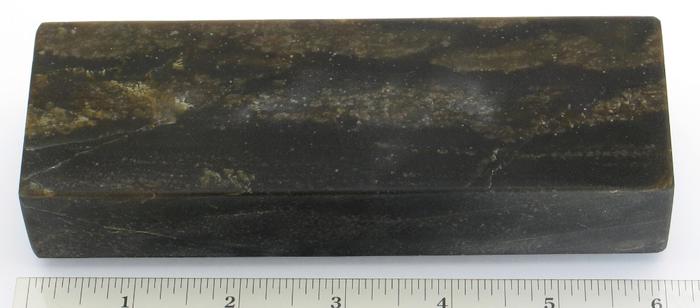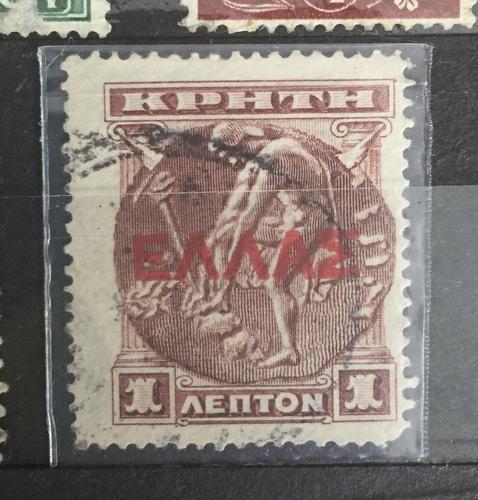Results 1 to 10 of 24
Hybrid View
-
04-09-2019, 07:45 PM #1
 Revisiting the "Turkish oilstone" matter
Revisiting the "Turkish oilstone" matter
Hello gentlemen,
This is a serious case of old stone identification, so, old friends with lots of experience, gather around the fire.
I was talking for a while on the phone with the owner of the Cretan stone quarry yesterday, and he is really interested in knowing the origin or names if not the history in general, behind the "Turkish" oilstone. Not in a strange nor obsessed way, he just wants to know what's the best name to sell the Cretan stones (advices are accepted)
So, is there anyone willing to loan/trade/sell/whatever a piece of a labeled Turkish oilstone? Size of particles, pores, shape and size of pores et cetera, that kind of thing under a microscope for starters, and he'll get it back, shipping costs on me.
Can we, and as a we I mean SRP as a whole more or less, AT LAST SOLVE THAT DARNED MYSTERY, that kept concerning Neil Miller as well as Henk Bos (until both of them left us, may they rest in peace) ? I won't say that we owe it to them as this is a heavy thing, they were legends, but we absolutely do owe it to ourselves if noting else.
Something that can more or less be solved with modern methods, or should WE let it fade into nothingness until nobody remembers a thing?
For anyone not wanting his name to appear, send me a PM and we can talk about it.
No matter what, I do want some closure on this matter, and proving that the Cratan stone IS OR ISN'T the "Turkish oilstone" stone, it seems fair/sufficient.
Thank you for your time gentlemenLast edited by Vasilis; 04-10-2019 at 03:46 AM.
-
04-09-2019, 10:02 PM #2Junior Member

- Join Date
- Dec 2015
- Location
- Hudson, NY
- Posts
- 18
Thanked: 8

This photo may help.
"Turkish" or Turkey oilstone? I call the stone in this photo Turkey oilstone. It is mostly fine silica crystals, similar to novaculite, but this stone has inclusions and impurities that weaken the structure of the mineral. It is typical of Turkey stone. The soft limestone inclusions wear away more quickly than the silica. The silica part is similar in grit to a hard Washita, a bit coarser than hard Arkansas. It cuts very nicely when using oil as a lubricant.
-
The Following User Says Thank You to cliveruss For This Useful Post:
Vasilis (04-10-2019)
-
04-10-2019, 02:00 AM #3Senior Member

- Join Date
- Nov 2016
- Location
- Chicago Suburbs
- Posts
- 1,104
Thanked: 292
At one time Crete was part of the Ottoman Empire. That is how the stone mined in Crete became known as the Turkish Oilstone. With the collapse of the Ottoman Empire following WWI, Crete no longer was associated with Turkey, but is a part of Greece. It has been nearly 100 years since Crete was associated with Turkey.
Thus, the use of the "Turkish Oilstone" name is no longer accurate, especially for modern mined stones. Since the stones are mined in Crete, the most appropriate name is Cretan Honing Stone. These stones are sold in the USA by Griffith Shaving Goods under that name.
-
The Following 2 Users Say Thank You to RayClem For This Useful Post:
markbignosekelly (04-10-2019), Vasilis (04-10-2019)
-
04-10-2019, 02:46 AM #4

In his book "L'art du coutellier" page 62, Jean Jacques Perret mentions the Pierre de Levant and says ships took them on board in the port of Jaffa before they would sail to Europe. Seems unlikely to me that these stones would have been mined in Crete and shipped to Jaffa before taken to Europe.
Link to the original text: https://books.google.de/books?id=1kv...page&q&f=falsePlus ça change, plus c'est la même chose. Jean-Baptiste Alphonse Karr.
-
The Following User Says Thank You to Kees For This Useful Post:
Vasilis (04-10-2019)
-
04-10-2019, 04:25 AM #5

cliveruss;
Your stone as well as the description is pretty much of the Cretan stone, but it's the labeled ones that I'm concerned with, scientific proof above anything else. Unless you have a label, or used to. Still, thank you for your answer and keep up the good work,
RayClem;
i'm finishing a history doctorate right now and I'm pretty familiar with Crete's history. You are right though, it can't be named "Turkish" oilstone, the mine owner told me the same. I don't know if it's about patriotism, national interests or something else but the name doesn't really matter on that plus if it's the same stone, it works like a copyright of shorts, although I dare not touch such sensitive matters so that specific name is out. The connection between them though is what I'm looking for.
Kees;
I know as a fact that these stones were shipped in oil barrels to Smyrna, and then who knows where but mostly Ottoman lands, including Jaffa as the market was HUGE within compared to what was sold in Europe and Americas, so, I can't say for sure that it's not the same stone. There were definitely different stones with the same name though.
Thank you for your answers Gentlemen, the thread gets attention, and that's the first step to find where the "Turkish" oilstone came from especially for labeled ones, but knowing history never hurt anyone. Probably.
Again, thank you all.
Edit; I don't know if there is a difference between Turkey and Turkish oilstone. Bird jokes aside.
-
04-10-2019, 12:19 PM #6Senior Member

- Join Date
- Nov 2016
- Location
- Chicago Suburbs
- Posts
- 1,104
Thanked: 292
Although I am an engineer by training, I love history. It seems today that few people are concerned with anything that has occurred more than a 50 years ago. Although baby boomers like me are fairly well acquainted with the history of WWII, when you get back to WWI, knowledge is often lacking. Here in the USA, we were taught the history of the USA and Western Europe, but we are sorely lacking in the history of other parts of the world.
-
The Following User Says Thank You to RayClem For This Useful Post:
Vasilis (04-12-2019)
-
04-11-2019, 06:37 PM #7

Just to be more specific. Crete gained independence from the Ottoman Empire in 1898 and joined Greece in 1913. In the between years ithey were independent, printed their own stamps for example. Top says Crete, bottom 1 lepton which was the equivalent of a cent. Once they joined Greece the remaining stamps were overprinted as Greece - red letters in the middle.
I just had to find a way to show this beautiful old stamp I got in a trade from a classmate in elementary school. I still remember she had gotten it from her grandfather.

-
The Following User Says Thank You to alex1921 For This Useful Post:
Vasilis (04-11-2019)
-
04-12-2019, 01:16 PM #8Senior Member

- Join Date
- Nov 2016
- Location
- Chicago Suburbs
- Posts
- 1,104
Thanked: 292
-
04-12-2019, 03:37 PM #9

I have been under the impression that the term "Turkey stone" originated from when Crete was part of the Ottoman empire, as mentioned. I have a vintage piece, that moves towards black an a newer piece that moves toward grey, both of the with white fissures characteristic of the stone. In France, I also have a stone that was quarried in Anatolia, not far from the Black Sea. But it's more of a sandstone, useful for knives and bevel work with razors.
Striving to be brief, I become obscure. --Horace
-
05-28-2019, 01:55 AM #10Senior Member

- Join Date
- Aug 2013
- Location
- NYC, NY
- Posts
- 1,497
Thanked: 169
Maybe ask sham if he has one to sell? He used to have labelled ones.


 12Likes
12Likes LinkBack URL
LinkBack URL About LinkBacks
About LinkBacks









 Reply With Quote
Reply With Quote

